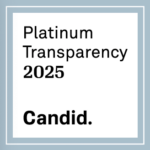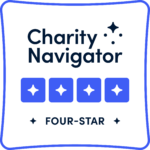Agency’s oncology office director reflects on his wife’s experience with cancer and urges patient community to tackle ‘big picture issues’ like clinical trial eligibility and informed consent.
The patient advocacy community should focus on overarching issues, such as expanding clinical trial eligibility and reforming the informed consent process, that will help drive progress in drug development, FDA Office of Hematology and Oncology Products Director Richard Pazdur said Nov. 17.
“I really would encourage the advocacy community … to focus on big questions, not get into the issue of whether we should use survival or time to progression” as approval endpoints, Pazdur said at the Conference on Clinical Cancer Research, sponsored by the Friends of Cancer Research and Brookings Center for Health Policy.
“The position of the patient should be defined by the patient, not by somebody else, certainly not by the FDA, not by the pharmaceutical industry or the clinical trials enterprise, which is a multibillion dollar enterprise,” he said.
FDA’s top oncology review official shared his view of the patient community’s role in drug development and the regulatory process – a view that has been shaped by his wife’s experience with cancer.
‘Other Side Of The Stethoscope’
Pazdur spoke frankly about the ovarian cancer diagnosis his wife, Mary, received about three years ago, the couple’s interactions with the health care system as she pursued aggressive treatment, and her decision to forego further treatment in favor of hospice care.
“You see the warts of the system,” Pazdur said of being on “the other side of the stethoscope.”
“You see the fact that you’re not immune” to drug toxicities or from human mistakes, Pazdur said. “People forget to order x-rays, people give you the wrong laboratory results. These things just happen, and people have to be accepting of that.”
In response to a question from Friends of Cancer Research Chair and Founder Ellen Sigal, Pazdur said it is difficult to say how his wife’s experience has influenced him because “we’re constantly evolving and there’s numerous things that impact us – not only our personal life, our professional life, the drugs that have come out during this three-year period of time. We’ve seen some very exciting drugs come out, so that really transformed a lot of what we’re doing.”
However, it’s clear his wife’s illness has reinforced his thinking on some issues and given him an appreciation for the hurdles that patients face.
“From a personal perspective, I’ve stated this publicly, I think we underestimate toxicity,” Pazdur said. “Doctors spend only a short time with patients in exam rooms. They don’t see really the entire spectrum of toxicities, how long it lasts, how it impacts patients’ lives.”
The Pazdurs also encountered challenges with the expanded access process for unapproved drugs.
“Even in my position, it is not an easy time to get an unapproved drug for a patient,” he said. “I have stated this also that I’ve had two former [National Cancer Institute] directors that couldn’t figure out how to … navigate through expanded access, and I think as part of an agency we have to have a better system. All the parts are there, and I’m not saying that every drug company needs to give drugs to patients that are unapproved, but we have to have a process that works better.”
Patient Voices Should Drive The Process
His wife’s illness reinforced for him the importance of incorporating the patient voice – or rather, the chorus of voices – in the drug development process.
FDA’s efforts to include the patient voice in drug development and regulatory decision-making include its patient-focused drug development initiative and the creation and implementation of a benefit/risk framework for new drug approvals. The agency also includes patient representatives on advisory committees.
However, Pazdur, who noted his position “has morphed from not only a regulator to a unique position of regulator/advocate,” sees a bigger role for patient advocacy efforts beyond discussions about endpoints and the merits of a particular drug under review.
“I think some of these big picture questions are we want clinical trials that work for us,” Pazdur said. He cited the need for a clinical trials system that makes it easier to enroll patients who do not fit “very exacting eligibility criteria,” such as with regard to performance status, previous malignancies or HIV status.
“We probably should take really a much harder look at what a real world experience is with a drug since that’s the way it’s going to be used,” he said. Expanding clinical trial eligibility criteria is something “I think everybody would agree with.”
Patient-driven reforms in the informed consent process also are needed.
“We need an informed consent process that works for us. The way it is now, we get all of these pages and pages of legalese,” Pazdur said.
“When my wife had an informed consent I started reading it and just threw it on the coffee table and said, ‘Mary, do what you want. You have to trust your doctor, but this form is really not going to help you make any decisions. It’s just going to confuse things.'”
Rather than asking patients merely to come to FDA and comment on a pending drug application or other issues, “they need to direct the show,” Pazdur said.
“So the question that I have for the patients out there is not so much what the FDA wants, but what do you want? And you need to drive the show, not the FDA, not the NCI, not the pharmaceutical companies, because ultimately the clinical trials are about you.”
https://www.pharmamedtechbi.com/Publications/The-Pink-Sheet-Daily/2015/…

